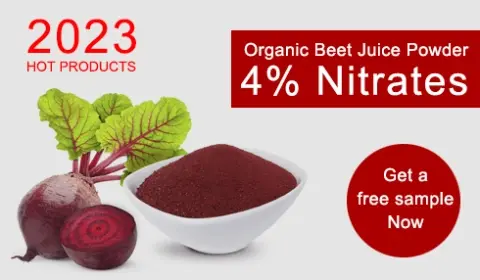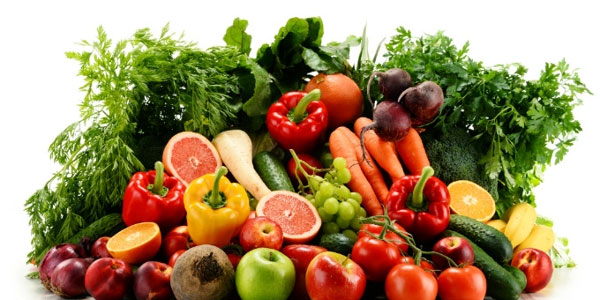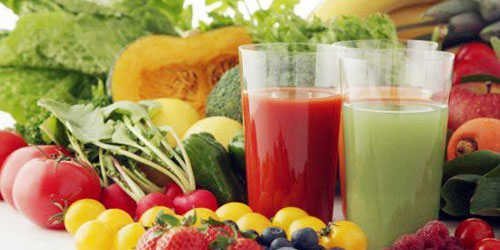Method for processing fruit and vegetable powder
- Offer: 2673
- Added: 3/28/2023 2:19:38 PM
Method for processing fruit and vegetable powder
果蔬粉的加工方法
The production of fruit and vegetable powder is generally dried and dehydrated by the raw materials of fruits and vegetables, and then further pulverized. The drying methods of fruits and vegetables mainly include hot air drying and vacuum freeze drying. The latter is greatly preserved due to drying under freezing and vacuum conditions, and the nutrients, color and flavor of fruits and vegetables are greatly preserved. Fruit and vegetable powder can also be made by beating, homogenizing and then spray drying, but the raw material utilization rate of this process is low, the cost is high, and it is rarely used in production. There are few varieties of fruit and vegetable powders, mainly pumpkin powder, tomato powder, garlic powder, onion powder, etc., but these powder particles are too large, inconvenient to use, and the temperature of the material during the milling is too high; Nutritional ingredients, color and flavor, and even a burnt smell.
果蔬粉的生产,一般是果蔬原料先干燥脱水,然后进一步粉碎。果蔬的干燥方法主要有热风干燥和真空冷冻干燥,后者由于在冷冻和真空状态下干燥,果蔬的营养成分、色泽和风味大大地保存了下来。果蔬粉也可通过打浆、均质后再进行喷雾干燥来制成,但这种工艺的原料利用率较低、成本高,生产中较少使用。现有的果蔬粉品种很少,主要有南瓜粉、番茄粉、蒜粉、葱粉等,但是这些粉末颗粒还太大,使用不方便,而且制粉时物料的温度过高;破坏了产品的营养成分、色泽和风味,甚至产生焦糊味。
At present, various fruit and vegetable powders on the market are basically rough processed powder and spray-dried flour. The first is that it has not reached the basic organization of plant organisms - cell-level pulverization and fiber bundle break-off, nutrients cannot be effectively precipitated and absorbed during consumption; second, the loss of nutrients of processed fruit and vegetable powder is high, color, fragrance, The taste difference is large and there are many waste residues. The traditional fruit and vegetable powder not only has a small variety, but also has large particles, is inconvenient to use, and the temperature of the material during the milling is too high, which destroys the nutrient composition, color and flavor of the product, and even produces an astringent taste. Drying techniques for processing fruit and vegetable powder mainly include hot air drying, spray drying, microwave freeze drying, vacuum freeze drying and ultrafine grinding technology.
目前市面上的各种果蔬粉基本上是粗加工粉和喷雾干燥制粉。其一是远未达到植物生物体基本组织——细胞级的粉碎和纤维束的断离,食用中营养成分不能有效析出和吸收;二是加工后的果蔬粉营养成分损失高,色、香、味差异大,废渣多。传统的果蔬粉不仅品种少,而且颗粒大,使用时不方便,并且制粉时物料的温度过高,破坏了产品的营养成分、色泽和风味,甚至产生焦煳味。用于果蔬粉加工的干燥技术主要有热风干燥、喷雾干燥、微波冷冻干燥、真空冷冻干燥及超微粉碎技术等。
Therefore, the processing of fruit and vegetable powder is developing in the direction of ultrafine pulverization. After the superfine pulverization of fruits and vegetables, the particle size can reach the micron level. Due to the ultrafine refinement of the particles, the physicochemical properties of the particles will change greatly due to the surface area and small size effect. The food ultrafine pulverization technology is a food processing industry. A new approach will bring great impetus to the improvement of traditional processes and the development of new products. Foods and the like have a strong surface adsorption and affinity after miniaturization, so they have good solidity, dispersibility and solubility to facilitate digestion and digestion. After the fruits and vegetables are dried and then subjected to ultrafine pulverization, the particles can reach a micron size. Due to the ultrafine refinement of the particles, it has significant advantages: First, the physical properties such as dispersibility, water solubility, adsorption, and affinity of the fruit and vegetable powder are improved, and it is more convenient to use; second, the nutrient component is easier to digest, and the taste is more The third is to use the dietary fiber in fruits and vegetables to achieve full utilization of fruits and vegetables, and to superfinely crush the fruit skin core, which can be prepared and deep processed into various functional foods, develop new food materials, and improve resource utilization. It conforms to the development direction of “efficient, high quality and environmental protection” in today's food processing industry.
因此果蔬粉的加工正朝着超微粉碎的方向发展。果蔬干制再经过超微粉碎后,颗粒大小可以达到微米级,由于颗粒的超微细化,具有表面积和小尺寸效应,其物理化学性将发生巨大变化,食品超微粉碎技术是食品加工业一种新的手段,对于传统工艺的改进、新产品的开发必将带来巨大的推动力。食品等经微细化后具有很强的表面吸附力和亲和力,故具有很好的固香性、分散性和溶解性,以利吸收消化。果蔬干燥后再经过超微粉碎后颗粒可以达到微米级大小。由于颗粒的超微细化,具有显著的优点:一是果蔬粉的分散性、水溶性、吸附性、亲和性等物理性能提高了,使用时更方便;二是营养成分更容易消化,口感更好;三是利用了果蔬中的膳食纤维,实现果蔬的全效利用,将果品皮核等一并超细粉碎,可配制和深加工成各种功能食品,开发新食材,提高了资源利用率,符合当今食品加工业的“高效、优质、环保”的发展方向。







